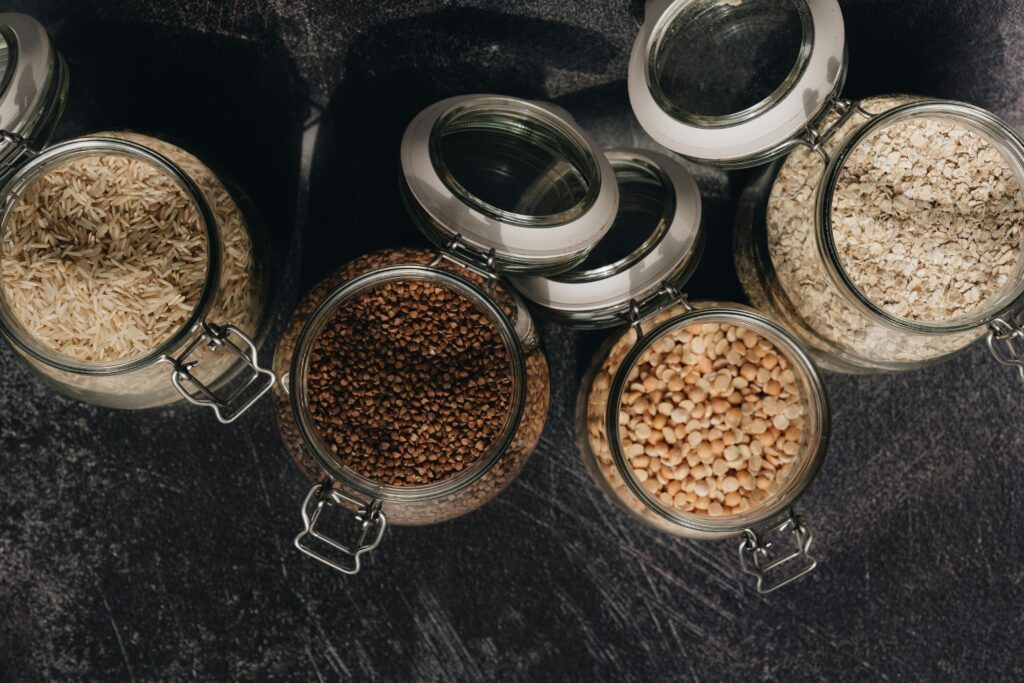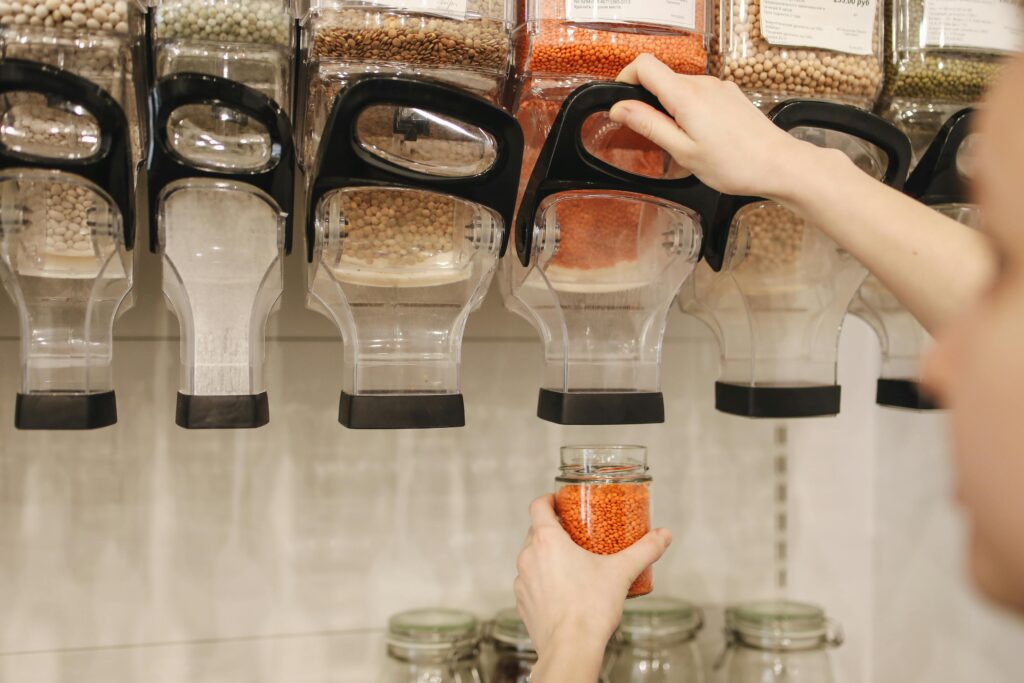
Whether you’re just starting your plant-based journey, exploring vegan living out of curiosity, or simply looking to eat more whole foods, stocking your pantry is a smart first step. Having the right staples on hand makes it easier to cook at home, eat nutritious meals, and avoid falling back on less healthy convenience foods.
Think of your pantry as the foundation of your kitchen. Once it’s stocked with plant-powered essentials, throwing together meals becomes quicker, cheaper, and way less stressful.
In this guide, I’ll explain the basic categories to focus on, give you examples of must-have items, and offer tips to help you build a budget-friendly pantry without getting overwhelmed.
What Is a Plant-Based Pantry?
A plant-based pantry includes ingredients mostly from whole plant foods—think grains, legumes, nuts, seeds, fruits, and veggies. It doesn’t necessarily mean you have to go 100% vegan (unless you want to). Many people use a plant-based approach to focus on eating more plants and fewer animal products overall.
The good news is that stocking your pantry for a plant-based lifestyle isn’t complicated. Once you learn the basics, it’s all about mixing and matching what works for your meals, taste preferences, and budget.
Key Categories for a Well-Stocked Plant-Based Pantry
Here’s a breakdown of the core pantry categories, with examples to help you get started.
Whole Grains
Whole grains are your energy-boosting, fibre-packed base for countless meals. You can cook them in bulk, freeze extras, and use them in bowls, salads, soups, or stir-fries. Top grain choices include:
- Brown rice
- Quinoa
- Rolled oats
- Whole wheat pasta
- Barley or farro
Legumes & Beans
Legumes and beans are a powerhouse of plant protein, fibre, and nutrients. For convenience, choose canned options, or go dried if you aim to save money and prep in bulk. Some great choices to start with include:
- Lentils (red, green, or brown)
- Chickpeas
- Black beans
- Pinto beans
- Edamame
Nuts & Seeds
Great for snacks, sauces, and adding crunch or healthy fats to meals. Ground flax or chia seeds also make excellent egg substitutes for baking. The best nuts and seeds to have on hand include:
- Almonds, walnuts, or cashews
- Chia seeds
- Flaxseeds
- Pumpkin or sunflower seeds
- Nut butters (natural peanut or almond butter)
Canned & Jarred Goods
These pantry heroes last a long time and come in clutch for quick meals. Keep a few cans of beans and tomatoes around, and you have the base for soups, stews, or pasta dishes. Some staples to keep on hand include:
- Diced tomatoes
- Tomato paste or sauce
- Coconut milk
- Artichoke hearts or olives
- Vegetable broth
Herbs, Spices, & Condiments
A common complaint I hear from people who eat a meat-based diet is that they miss the taste of meat too much. I find this humorous because it’s rare that someone cooks a hunk of meat without seasoning it and slathering it with sauce.
Herbs and spices are where the flavour lives. A few key seasonings can totally transform your meals. These are some superstars you’ll want on hand:
- Garlic powder, onion powder, smoked paprika
- Cumin, curry powder, Italian seasoning
- Soy sauce, tamari, or coconut aminos
- Nutritional yeast—or nooch as us vegans call it (for a cheesy, savory kick—you’ll discover why they call this “vegan crack”)
- Hot sauce, tahini, or mustard
You don’t need everything at once—just start with flavours you enjoy and build from there.
Plant-Based Milks & Dairy Alternatives
It seems that milk and dairy are in almost everything we eat. So, having some plant-based alternatives on hand is helpful for coffee, cereal, smoothies, and baking.
- Unsweetened almond, soy, or oat milk
- Coconut or soy yogurt
- Vegan cheese or butter (optional, depending on how processed you want to go)
Look for options that are unsweetened and fortified with calcium and B12 when possible.
Frozen Essentials
The frozen goods aren’t technically in the pantry, but deserve an honourable mention. Frozen essentials can be great when you’re on a budget. And don’t let anyone tell you frozen fruit, berries, or veggies aren’t as nutritious. This is actually the opposite in many cases. Some frozen staples to have include:
- Frozen broccoli, spinach, peas, or mixed veggies
- Frozen berries or bananas for smoothies
- Pre-cooked brown rice or grains

Tips for Building Your Pantry on a Budget
You don’t have to stock your entire pantry in one grocery trip. Here are a few ways to build slowly and affordably:
- Buy in bulk when you can, especially for grains, beans, and spices
- Stick to the basics—you don’t need pricey “superfoods” or every nut butter on the shelf
- Watch for sales and stock up on long-lasting items
- Compare prices between canned vs. dried goods and store brands
- Add 1 or 2 new items weekly so you build your pantry naturally over time
Pantry Organization Tips for Beginners
A well-organized pantry makes it easier to see what you have and avoid waste.
- Group similar items together (grains with grains, cans with cans)
- Use clear containers or jars for bulk items like rice and lentils
- Label things you buy in bulk so you remember what they are
- Keep a running grocery list nearby so you can restock before you run out
Common Mistakes to Avoid
Even with the best intentions, it’s easy to make a few beginner missteps. Here are a few to watch out for:
- Loading up on vegan junk food: Not all plant-based products are healthy—try to focus on whole foods most of the time
- Neglecting protein sources: Make sure you’re eating enough legumes, tofu, tempeh, and seeds to meet your protein needs
- Skipping the flavour: A plant-based pantry should be exciting—spices, sauces, and seasonings are your best friends
Start Stocking Your Pantry Today
Stocking a plant-based pantry isn’t about perfection but setting yourself up for success. With just a few categories of ingredients, you can whip up meals that are healthy, satisfying, and full of flavour.
Remember: start small. Add 1 or 2 staples each week, pay attention to what you actually use and enjoy, and let your pantry evolve with your taste and lifestyle. Head to the store with a list, keep it simple, and build your pantry one shelf at a time. You’ve got this.
If you need help getting started on your plant-based or vegan health and fitness journey, I’m here for you! Book a free consultation today. My online coaching program offers in-depth education on how to eat and train as a vegan.